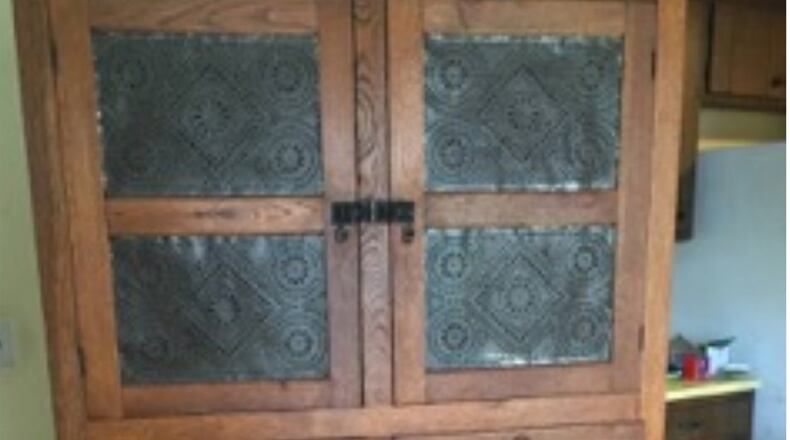Dear Helaine and Joe:
I inherited this pie safe from my father, and I believe the tins were hand-punched because I remember my father telling me how it was done. I would like to know its value for resale because it does not fit into my new home.
Thank you,
A. H.
Dear A. H.:
Most people call a piece of furniture such as this one a “pie safe,” but such pieces do have other name, such as pie chest, pie cupboard, kitchen safe or even meat safe. These were common items in many American homes, primarily in the late 18th century and throughout the 19th century before refrigeration became commonplace.
Pie safes were standard equipment in many kitchens. They were kept away from the stove — the hottest place in the room — and placed in the coolest spot where a draft might waft through the punched holes in the tins to keep the food stored inside from spoiling. The punched holes also kept the flies and other undesirable vermin at bay (rats sometimes beat the system by gnawing a hole in the backboards).
In many homes of this period, especially farming homes, the major meal of the day was served at noon. A huge meal would be prepared for those who had been toiling in the fields. There might be a ham taken from the smokehouse (fried chicken was a little less common), or items might be brought in from the springhouse or root cellar where they would have been stored in a relatively cool climate.
The spread of food at noon would be impressive, but so would be the appetites of those who had been laboring in the fields and in the hot sun. After the prodigious meal, the remains would be covered and put in the pie safe, where they would form the basis for the evening supper.
In the late 18th and most of the 19th centuries, families did not go down to the local furniture store and purchase their pie safes. Often times, a craftsman in town would make the piece to order, or dad or grandad would pass the time making a family pie safe during the slow winter months. The tins for the sides and doors would be punched from a design that was in the maker’s head. It might be an eagle, a tree growing out of a sugar bowl or a rooster, or if the maker was a Mason, a design based on Masonic symbolism.
Collectors love these. The folk art design of the tins and the craftsmanship that could sometimes be idiosyncratic, plus the beauty of the wood — usually pine, walnut or in special cases, figured walnut — can be very alluring. Unfortunately the example in today’s question is a very late example and manufactured. It was probably sold by a retailer such as Sears Roebuck or Montgomery Ward and the tin inserts are machine made and ones we see frequently.
This piece is circa 1900 (somewhat later than the time when iceboxes became available to the general public), and appears to have made from oak. The piece in today’s question has a retail value of perhaps $750, but it will bring much less if sold by A. H.
———
Helaine Fendelman and Joe Rosson have written a number of books on antiques. Do you have an item you'd like to know more about? Contact them at Joe Rosson, 2504 Seymour Ave., Knoxville, TN 37917, or email them at treasures@knology.net. If you'd like your question to be considered for their column, please include a high-resolution photo of the subject, which must be in focus, with your inquiry.
About the Author
Keep Reading
The Latest
Featured


